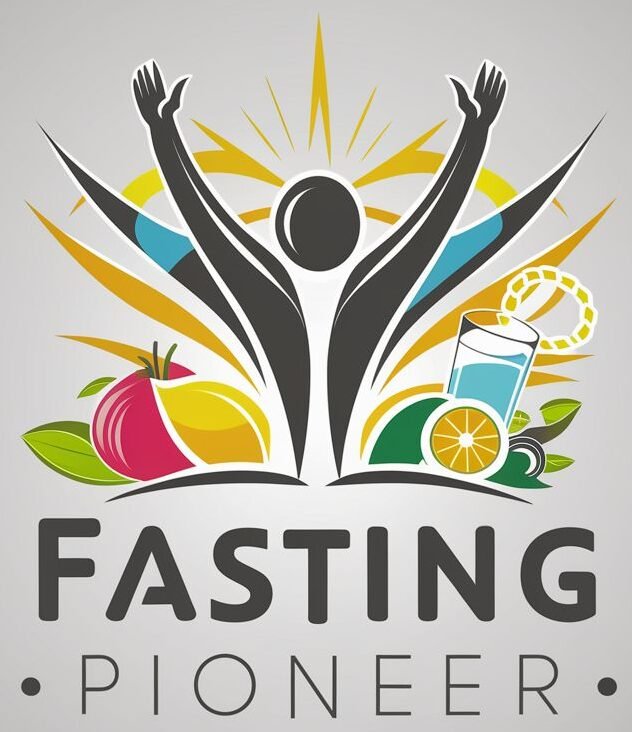If you’ve ever wondered about using fasting as a tool for weight loss, this article is here to give you the scoop. We’ll break down what fasting is, how it can contribute to weight loss, and the different fasting methods you can try. So before you skip that meal, sit back, relax, and let’s dig into the world of fasting for weight loss.

What is fasting?
Fasting is a practice that involves voluntarily abstaining from food and, in some cases, drink for a specific period of time. It has been practiced for centuries for various religious, spiritual, and health reasons. While fasting has gained popularity for its potential weight loss benefits, it is essential to understand its definition and the different types available.
Definition of fasting
Fasting is typically defined as the deliberate and temporary avoidance of all or certain kinds of food and/or drink. It goes beyond simply skipping meals and involves a conscious decision to refrain from consuming any calories for a specific duration. The duration of a fast can vary widely, ranging from a few hours to several days or even weeks, depending on the fasting method chosen.
Different types of fasting
There are several types of fasting that individuals can choose from, and it’s important to understand the differences between them to determine which method aligns best with your goals and lifestyle.
Intermittent fasting: This fasting method involves cycling between periods of fasting and eating. The most common approach is the 16/8 method, where you fast for 16 hours and have an 8-hour eating window. Other variations include alternate-day fasting and the 5:2 diet, where you eat normally for five days and restrict calories for two non-consecutive days.
Alternate-day fasting: As the name suggests, this method involves alternating between a fasting day, where only a limited number of calories are consumed, and a day of normal eating. It can be challenging initially, but it offers flexibility with the timing of fasting and eating.
Extended fasting: This refers to prolonged periods of fasting that typically last for more than 24 hours. Extended fasting can range from several days to weeks, and it requires careful planning, monitoring, and medical supervision for safety.
Each type of fasting has its own unique approach and benefits, but it’s crucial to consider your health, lifestyle, and personal preferences when choosing the right method for you.
Benefits of fasting for weight loss
While weight loss should not be the only reason for exploring fasting, it is a significant benefit that has caught the attention of many individuals. Let’s take a closer look at some of the ways fasting can support weight loss efforts.
Increased weight loss
By creating a calorie deficit during the fasting period, fasting can help accelerate weight loss. It restricts the time available for eating, making it more difficult to overconsume calories. As a result, fasting can lead to a reduction in overall calorie intake, ultimately aiding in weight loss.
Improved insulin sensitivity
Insulin is a hormone that plays a vital role in regulating blood sugar levels. When you fast, your insulin levels decrease, which can improve your body’s sensitivity to insulin. This enhanced sensitivity can help optimize blood sugar control and promote weight loss.
Reduced inflammation
Inflammation is considered a contributing factor to various chronic diseases, including obesity. Fasting has been shown to reduce markers of inflammation in the body, potentially leading to improved overall health and weight management.
Enhanced autophagy
Autophagy is the body’s natural process of removing and recycling damaged cells and molecules. Fasting has been found to stimulate autophagy, which may help with the break down of fat stores and promote cellular rejuvenation. This can be beneficial for weight loss and overall cellular health.
Preserved muscle mass
During weight loss, the body often breaks down both fat and muscle. However, fasting has been shown to help preserve muscle mass while primarily targeting fat stores for energy. This is advantageous because maintaining muscle mass can support a higher metabolic rate, making it easier to sustain weight loss in the long run.
While these benefits are promising, it’s important to note that fasting alone is not a magical solution for weight loss. It should be approached as part of a well-rounded, sustainable lifestyle that includes a balanced diet, regular exercise, and other healthy habits.
Risks and considerations
While fasting can offer potential benefits, it’s essential to be aware of the potential risks and considerations associated with this practice.
Lack of essential nutrients
When fasting, there is a risk of not consuming an adequate amount of essential nutrients if proper planning and variety in food choices are not prioritized during the eating window. It’s crucial to ensure that the meals consumed contain a balanced mix of protein, carbohydrates, healthy fats, vitamins, and minerals to support overall health and well-being.
Potential muscle loss
While fasting can help preserve muscle mass to a certain extent, long periods of fasting may still result in some muscle breakdown. To mitigate this risk, it is crucial to engage in regular physical activity, especially resistance training, to help maintain and build muscle while losing weight.
Hormonal imbalances
Fasting can impact hormone levels, particularly in women. Prolonged or extreme fasting methods can disrupt the delicate balance of hormones like estrogen and progesterone, potentially leading to irregular menstrual cycles or other hormonal imbalances. If you have concerns about your hormonal health, it is advisable to consult with a healthcare professional before embarking on a fasting regimen.
Difficulty adhering to long-term fasting
Some individuals may find it challenging to adhere to fasting methods in the long run, particularly if they have a history of disordered eating patterns or struggle with food-related mental health issues. It’s crucial to listen to your body and ensure that fasting does not lead to an unhealthy relationship with food or the development of restrictive eating habits.
Adverse effects for certain medical conditions
Fasting may not be suitable for everyone, especially those with certain medical conditions. Individuals with diabetes, kidney disease, eating disorders, or other chronic health conditions should exercise caution and consult with a healthcare professional before starting any fasting regimen.

Choosing the right fasting method
With several fasting methods available, it’s important to select the one that aligns best with your lifestyle and goals. Here are three popular fasting methods to consider:
Intermittent fasting
Intermittent fasting is a flexible approach that involves cycling between periods of fasting and eating. This method can be easier to sustain for long-term adherence due to its customizable nature. The 16/8 method, where you fast for 16 hours and have an 8-hour eating window, is a popular and beginner-friendly option.
Alternate-day fasting
Alternate-day fasting involves alternating between days of restricted calorie intake and days of normal eating. This method offers some flexibility in scheduling and can be suited for individuals who prefer occasional periods of more intense fasting.
Extended fasting
Extended fasting refers to more prolonged fasting periods that typically last for several days or even weeks. This method requires careful planning, monitoring, and potentially medical supervision due to the extended duration. It is not recommended for beginners or individuals without prior experience with fasting.
When selecting a fasting method, consider your schedule, preferences, and overall health status. It can also be beneficial to experiment with different fasting methods to find the one that works best for you.
Tips for successful fasting
To ensure a successful fasting experience, it’s important to keep a few key tips in mind:
Stay hydrated
Hydration is crucial during fasting periods. While water is the best choice, herbal teas, black coffee, and unsweetened beverages can also be consumed. Aim to drink sufficient fluids to stay hydrated and help stave off hunger.
Eat nutrient-dense meals during feeding periods
Make sure to consume nutrient-dense meals during your eating window to ensure you’re getting a wide range of essential nutrients. Focus on whole foods, including lean protein, fruits, vegetables, whole grains, and healthy fats, to support overall health and well-being.
Listen to your body
Pay attention to your body’s hunger and fullness cues. If you’re feeling lightheaded, weak, or excessively hungry, it may be a sign that you need to adjust your fasting schedule or meal composition. It’s crucial to prioritize your well-being and make modifications as needed.
Start gradually
If you’re new to fasting, it’s advisable to start gradually. Begin with shorter fasting periods and gradually increase the duration as your body adjusts. This approach can help prevent potential negative side effects and improve long-term adherence.
Seek professional guidance
If you have any underlying health conditions, it’s essential to consult with a healthcare professional or registered dietitian before starting any fasting regimen. They can provide personalized guidance and ensure that fasting is safe and appropriate for you.
Combining fasting with other weight loss strategies
While fasting can be effective for weight loss, it is important to remember that it is not a standalone solution. Combining fasting with other weight loss strategies can enhance results and promote overall well-being. Here are a few strategies to consider:
Implementing a balanced diet
Fasting should be complemented with a well-balanced diet consisting of whole, nutrient-dense foods. Focus on consuming an appropriate amount of calories and macronutrients for your individual needs. Incorporate a variety of fruits, vegetables, whole grains, lean proteins, and healthy fats to optimize nutrition.
Incorporating regular exercise
Regular physical activity is essential for overall health and weight management. Combine fasting with regular exercise, including both cardio and strength training, to maximize the benefits. Be sure to fuel your workouts appropriately during feeding periods to support performance and muscle recovery.
Tracking calorie intake
While fasting inherently creates a calorie deficit, it can still be helpful to track your calorie intake during eating windows to ensure you’re not overcompensating for the fasting period. Calorie tracking can provide valuable insights into your overall energy balance and help you make informed dietary choices.
Monitoring progress
Keep track of your progress by monitoring your weight, measurements, and how you feel overall. This can help you stay motivated and make adjustments as needed. It’s important to remember that weight loss is not linear, so fluctuations in measurements are normal.
Common misconceptions about fasting
With the growing popularity of fasting, it’s important to address common misconceptions surrounding this practice:
Fasting leads to muscle loss
One common misconception is that fasting automatically leads to muscle loss. While prolonged fasting can result in some muscle breakdown, incorporating resistance training and ensuring adequate protein intake can help mitigate this risk. Additionally, intermittent fasting and shorter fasting periods have been shown to help preserve muscle mass.
Fasting slows down metabolism
Contrary to the belief that fasting slows down metabolism, research suggests that it can actually have beneficial effects on metabolic rate. Short-term fasts have been found to increase metabolic rate, potentially aiding in weight loss efforts. However, it’s important to note that long-term, extreme fasting may have the opposite effect.
Fasting is only for weight loss
While fasting is commonly associated with weight loss, it can offer various other benefits beyond just shedding pounds. These can include improved insulin sensitivity, reduced inflammation, enhanced autophagy, and potential longevity benefits. Fasting can be practiced for health and wellness reasons unrelated to weight loss.
Important considerations before fasting
Before embarking on a fasting regimen, there are some important considerations to keep in mind:
Consultation with a healthcare professional
If you have any underlying medical conditions or concerns, it’s crucial to consult with a healthcare professional or registered dietitian before starting any fasting regimen. They can assess your individual health status, provide personalized guidance, and ensure that fasting is safe and appropriate for you.
Personalized approach based on health status and goals
Fasting is not a one-size-fits-all approach. Considering your health status, goals, and lifestyle is essential when determining the most suitable fasting method for you. Take into account your unique needs and ensure that fasting aligns with your overall well-being.
Awareness of any underlying medical conditions
Certain medical conditions may contraindicate or warrant modifications in fasting practices. If you have diabetes, hypoglycemia, kidney disease, or other chronic health conditions, it’s crucial to discuss fasting with your healthcare professional to prevent any potential adverse effects.
Potential side effects of fasting
While fasting can have numerous benefits, it’s important to be aware of potential side effects that may arise:
Hunger and cravings
During the fasting period, it is natural to experience hunger and cravings. However, these sensations can be managed by staying hydrated, consuming fiber-rich foods, and incorporating strategies to distract from the hunger, such as engaging in recreational activities or focusing on tasks.
Headaches and dizziness
Some individuals may experience headaches or feelings of dizziness, especially when starting a fasting regimen. These symptoms can often be alleviated by ensuring adequate hydration, managing stress levels, getting sufficient sleep, and gradually easing into fasting.
Digestive issues
Changes in eating patterns and calorie restriction can sometimes lead to digestive issues such as constipation or diarrhea. It’s important to pay attention to your body and make adjustments to your eating habits as needed. Including fiber-rich foods, staying adequately hydrated, and consuming probiotic-rich foods can support digestive health.
Fatigue and low energy levels
During fasting, it is common to experience temporary fatigue or low energy levels, especially during the initial adjustment period. Providing your body with adequate rest, prioritizing quality sleep, and considering adjusting fasting protocols can help manage these symptoms.
Conclusion
Fasting can be a valuable tool for weight loss when approached with caution and a personalized approach. It offers numerous benefits, including increased weight loss, improved insulin sensitivity, reduced inflammation, enhanced autophagy, and preserved muscle mass. However, it’s important to be mindful of potential risks, consider individual health status and goals, and consult with a healthcare professional before starting any fasting regimen. Remember to prioritize your health and well-being throughout the fasting journey, and combine fasting with other weight loss strategies, such as implementing a balanced diet and regular exercise, for optimal results. By practicing fasting in a safe and sustainable manner, you can harness its potential benefits and achieve your weight loss goals.








